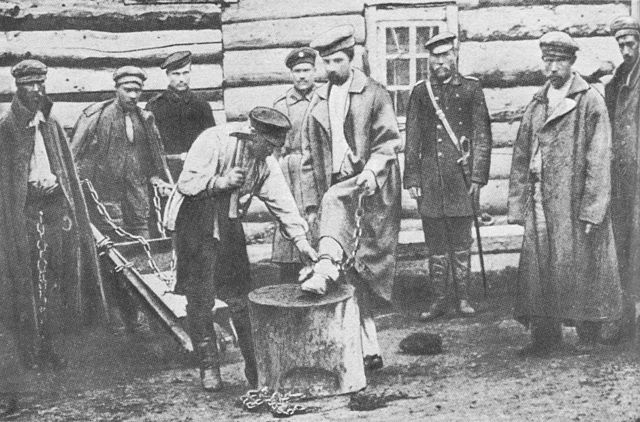
February 10, 2014, by Harry Cocks
Violence in Revolutionary Russia
Was the violence that accompanied the Russian Revolution and the early years of the USSR specific to the Bolshevik state, characteristic of its “totalitarianism,” or is violence somehow inherent to the formation of modern states? Did Bolshevik terror merely represent the militarisation of practices begun by the tsarist government, such as categorisation, information gathering, policing, incarceration and deportation? Is violence always an act of physical domination, or can it also be symbolic, defined by adherence to laws and beliefs that reproduce unequal relations of power?
These questions are examined in a new special issue of the journal Europe-Asia Studies “Villains, Victims and Violence,” edited by Sarah Badcock of Nottingham History (see link). In the introduction, Steve Smith of Oxford University suggests that violence must be regarded as an injury to the body, as that allows us to distinguish its physical forms from its symbolic or institutional types. We should, he argues, attend to the specific forms of interaction between victim and perpetrator. To this end Dr Badcock’s article “From Villains to Victims: Experiencing Illness in Siberian Exile”, discusses the specific organisation of late-Imperial deportation to and imprisonment in Siberia in the decades before and after the revolution of 1905 (exiles to Siberia are shown here being fettered, from Anton Chekhov’s investigation of the prison system on Sakhalin Island, 1893-4). Incarceration of this kind had two conflicting ambitions: on the one hand the tsarist state used Siberia much as the later Soviet state did, as a vast dumping ground for those deemed politically and socially undesirable; on the other, it saw deportation as integral to the process of colonisation, encouraging prisoners to eventually become settlers. However, the conditions in which deportees lived were so poor as to frustrate the latter ambition, even though local regional governors tried to mitigate the suffering of prisoners by setting up almshouses and medical care. As A. Dobrokhotin-Baikov, a political prisoner sent to Irkutsk in 1911 recalled, he was initially incarcerated in a large general barracks “together with criminal trash,” and amidst “filth, stench [and] the appalling swearing of the criminals.” The effects of such imprisonment meant that simply being moved on foot to their place of labour was physically difficult, and “several of us, me included, could not walk far and fell from incapacity.” The result was “rough handling and blows from the soldier convoy [though] again we fell, and again gun butts. Somehow we dragged ourselves forward.” Dr Badcock’s article shows that although the illness that resulted from these conditions was not intended as part of the punishment by the tsarist state, it became so through circumstance, neglect and abuse. As a result, Siberian exile was frequently a slow, not to mention violent, death sentence.
Sarah Badcock, “From Villains to Victims: Experiencing Illness in Siberian Exile”, Europe-Asia Studies, 65:9, 1716-1736
http://www.tandfonline.com/toc/ceas20/65/9#.Us1lLiUgGSM
No comments yet, fill out a comment to be the first

Leave a Reply